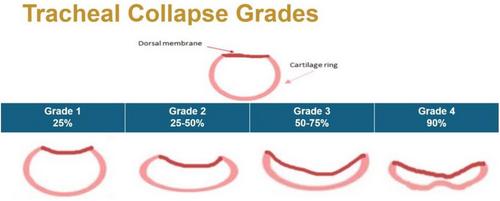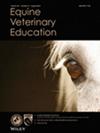马气管塌陷:诊断、管理和手术挑战
IF 0.8
4区 农林科学
Q3 VETERINARY SCIENCES
引用次数: 0
摘要
这篇文章简要回顾了气管塌陷,因为它是看到在马,小马,微型马和驴。诊断是直接的,与医疗管理下呼吸道疾病,如果可能的话,治疗的一个重要组成部分。手术矫正的条件是可能的,长期的结果有不同的结果。气管塌陷由于外伤从外部力量驴被描述。本文章由计算机程序翻译,如有差异,请以英文原文为准。




Tracheal collapse in equines: Diagnosis, management and surgical challenges
This article briefly reviews tracheal collapse as it is seen in horses, ponies, miniature horses and donkeys. Diagnosis is straightforward, with medical management of lower respiratory tract diseases, when possible, an important component of therapy. Surgical correction of the condition is possible, with long-term outcomes having variable results. Tracheal collapse due to trauma from external forces in donkeys is described.
求助全文
通过发布文献求助,成功后即可免费获取论文全文。
去求助
来源期刊

Equine Veterinary Education
农林科学-兽医学
CiteScore
2.40
自引率
22.20%
发文量
132
审稿时长
18-36 weeks
期刊介绍:
Equine Veterinary Education (EVE) is the official journal of post-graduate education of both the British Equine Veterinary Association (BEVA) and the American Association of Equine Practitioners (AAEP).
Equine Veterinary Education is a monthly, peer-reviewed, subscription-based journal, integrating clinical research papers, review articles and case reports from international sources, covering all aspects of medicine and surgery relating to equids. These papers facilitate the dissemination and implementation of new ideas and techniques relating to clinical veterinary practice, with the ultimate aim of promoting best practice. New developments are placed in perspective, encompassing new concepts and peer commentary. The target audience is veterinarians primarily engaged in the practise of equine medicine and surgery. The educational value of a submitted article is one of the most important criteria that are assessed when deciding whether to accept it for publication. Articles do not necessarily need to contain original or novel information but we welcome submission of this material. The educational value of an article may relate to articles published with it (e.g. a Case Report may not have direct educational value but an associated Clinical Commentary or Review Article published alongside it will enhance the educational value).
 求助内容:
求助内容: 应助结果提醒方式:
应助结果提醒方式:


